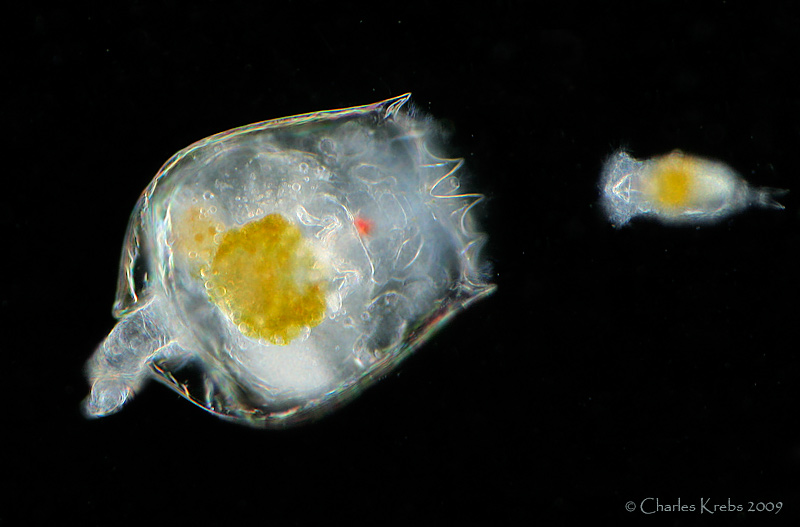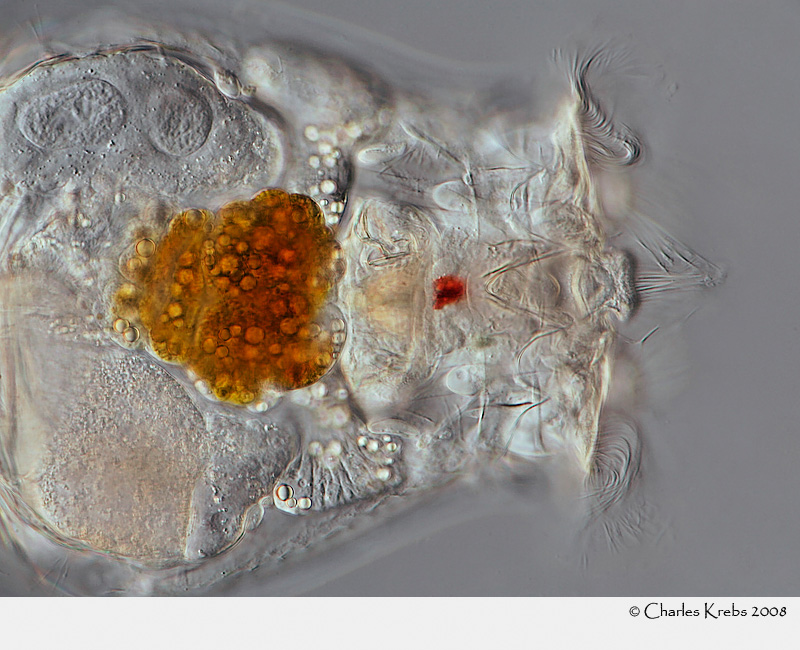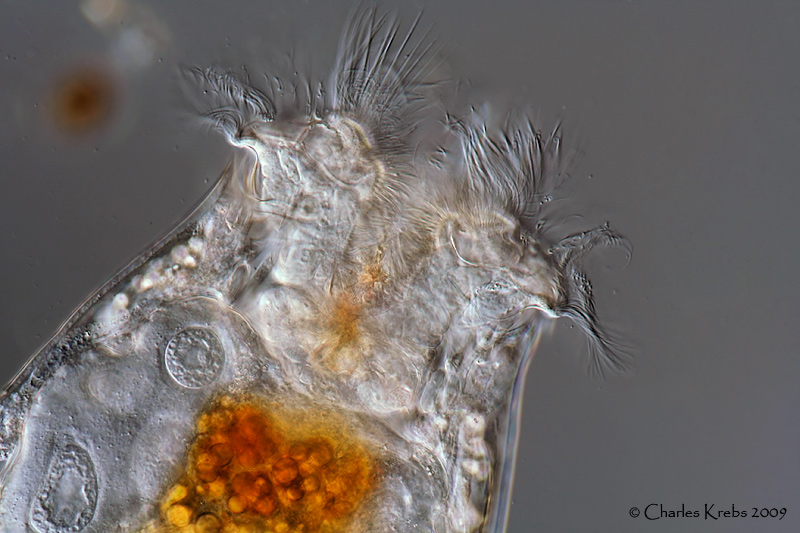Aynia,
Why are the backgrounds different? Is that your personal choice?
To some degree, yes, but not always. It has to do with the type of illumination used, and that is sometimes "dictated" by the subject.
The top image here is "darkfield" illumination. With "darkfield" the subject will be lit up with a black (hopefully

) background. Closely related is Rheinberg illumination, where the background color can be changed from black to just about anything desired. Darkfield (and Rheinberg) are generally easier to accomplish at lower magnifications.
Brightfield is probably the most common microscope illumination method. Here the subject is transilluminated, but the background will be white (or very close to it). Here is an example of "brightfield":
http://www.photomacrography.net/forum/v ... php?t=2115
Then you get into more specialized lighting that is often designed to help with subjects that would otherwise appear too "clear" or "transparent" to clearly see the desired details. "Phase contrast" and "DIC" (differential interference contrast) are two of these. The lower two images on each of these Brachionus posts were made using DIC. With DIC you can sometimes "dial in" some strong colors as seen in the top two images here:
http://www.photomacrography.net/forum/v ... php?t=4717
but these often look too "artificial", so many users try to keep the background close to a neutral tone... which is generally a shade of gray or blue-gray. For example, in the Ptygura picture referenced in the earlier post I chose to have the color tend toward blue.





